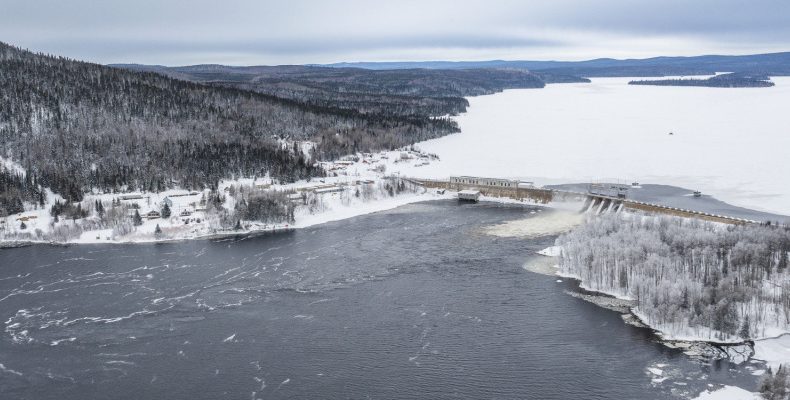To exploit the hydroelectric potential of the Saint-Maurice River, endowed with a high flow and very high falls, several dams, reservoirs and power stations were built at the beginning of the 20th century.e century to stabilize the flow of the river and extract energy from it. Overview of this hydroelectric complex that allows Hydro-Québec to regulate 40% of the water in this fiery river.
La Tuque Dam

PHOTO MARTIN CHAMBERLAND, THE PRESS
The La Tuque dam
- Year of construction: 1940
- Height: 40m
- Reservoir area: 800 ha
The La Tuque generating station has a production of 294 MW. It replaced an older plant in 1940. The fall on which it sits allowed the industrialization of the city of La Tuque. At the beginning of the XXe century, the flow of the river was shared between pulp and paper and hydroelectric companies. In particular the Canada Iron Corporation in Trois-Rivières, the Quebec and St. Maurice Industrial Company in La Tuque, the Laurentide Company in Grand-Mère and the Shawinigan Water and Power Company in Shawinigan, recalls Hydro-Québec. Before nationalization, the water in the river was regulated by a common institution, the Saint Maurice Hydraulic Company.
Matawin Dam

PHOTO MARTIN CHAMBERLAND, THE PRESS
- Year of construction: 1930
- Height: 27m
- Reservoir area: 9505 ha
This dam created the Lac-Taureau reservoir. It is one of the annual reservoirs of the Saint-Maurice, which are much smaller than that of the Gouin. Between its maximum level and its lowest level, there is a 13-meter gap. It is emptied at the end of winter to be filled when the snow melts. In summer, an agreement with the town hall of Saint-Michel-des-Saints provides for a level difference of 30 centimeters to allow vacationers to practice water sports. “Major works” […] required to ensure the durability of this work” must be carried out, but not “before several years”.
Gouin Dam

PHOTO PROVIDED BY HYDRO-QUÉBEC
The Gouin dam
- Year built: 1918
- Height: 24.17m
- Reservoir area: 130,276 ha
Built in the 1910s by the Shawinigan Water and Power Company, this dam created a multi-annual reservoir, that is to say it is so big that it compensates for variations in precipitation over this immense territory. Between its lowest level just before the spring flood and its maximum operating level, there is a difference of 11.3 meters, but this difference is never reached in the same year. Studies are underway to assess the rehabilitation of the spillway.
La Trenche Dam

PHOTO MARTIN CHAMBERLAND, THE PRESS
The La Trenche dam
- Year built: 1951
- Height: 61.90m
- Reservoir area: 1448 ha
This book will be the next to be refurbished. Hydro-Québec plans to “repair the six turbine-generator units with an increase in installed power of 48 MW”, as well as “increase in the evacuation capacity for the passage of a probable maximum flood taking into account the ‘impact of climate change’. Like most of the Saint-Maurice power stations, it is run-of-river. Its installed power is 302 MW.
Rapide-Blanc Dam

PHOTO MARTIN CHAMBERLAND, THE PRESS
The Rapide-Blanc dam
- Year built: 1934
- Height: 41.75m
- Reservoir area: 8260 ha
The Rapide-Blanc dam houses a 204 MW hydroelectric power station, currently being repaired, and allows the creation of a reservoir on the Saint-Maurice River, north of La Tuque. Between its maximum level and its lowest level, there is a 9 meter difference. In summer, under an agreement with local residents, outfitters and vacationers in particular, this maximum difference is 50 centimeters. “This is not a firm commitment on our part, since the safety of the public and the facilities always remains the first criterion in the operation of a reservoir”, specifies Hydro-Québec.

